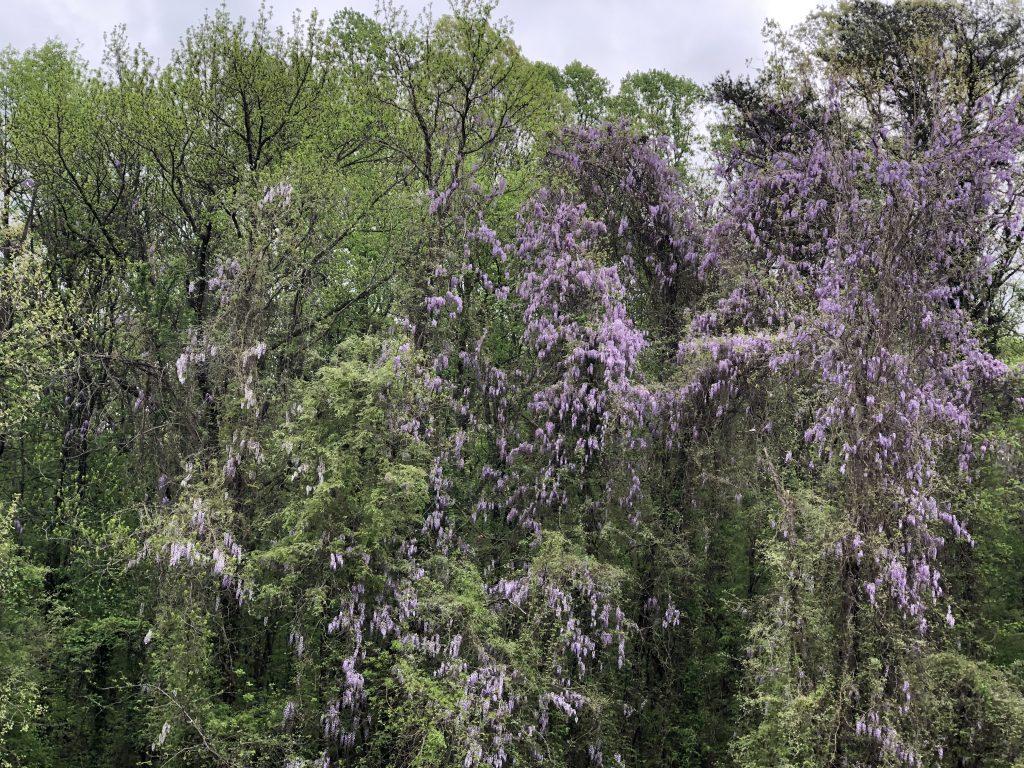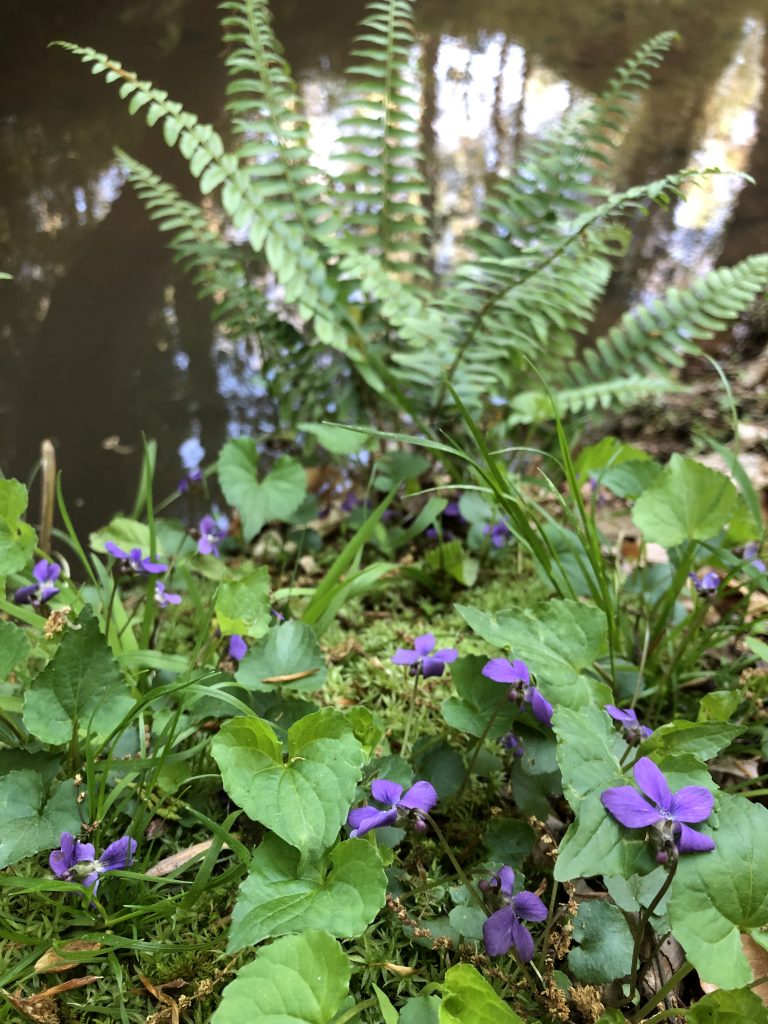With the dawning of spring comes a burst of life in to the Guilford woods. As plants flower and trees begin to regain their leafiness there is a sense of rebirth to the land. Through the purple haze of the Wisteria and the green hue of the freshly budding leaves there is an atmosphere of color being returned after long and bare winter. In the glimpse of an eye, trees that were naked for months begin to grow leaves. This happens fast almost as if one day the trees are completely nude and the next they are bursting with foliage.
The Wisteria plant is a member of the legume family that is not native to the US. It originated in areas of Asia such as China, Korea, and Japan before being introduced to the Eastern United States. They are a flowering plant that consist of woody vines, able to climb as high as 20 meters above the ground. This capacity for being able to climb so high is vital due to the fact that they thrive in the sun. The vines twist their way up through the leaves of the trees they occupy, to reach the top of the canopy and soak up the sunlight before being able to bloom.

When they bloom the Wisteria creates a beautiful purple cone shaped bushel of flowers that hang off the ends of the trees, making it look as if the trees are coated in purple cotton candy. These flowers are fragrant and can provide a food source for the larvae of the brown-tail moth, but the seeds can be poisonous if ingested. The arrival of the Wisteria hanging from the trees marks the beginning of spring and the bloom that is to follow.
With all of the flowering plants and trees comes a blanket of pollen dense in the air and thick on the ground as it settles. Cars parked in the parking lot behind the North Apartments become coated with green powder and the air smells of fresh life returning after a period of hibernation. Much to the dismay of those who suffer from seasonal allergies, there is no escaping the result of this burst of pollen.
The woods are filled with different species of plants native to North Carolina as well as plants that are commonly found along the east coast and surrounding areas. The underbrush of the wood is mostly comprised of what look like weeds, but if you take a closer look you can notice different leafy plants. There is a large number of ferns that cover the ground, as well as what are called may apples that make beautiful white flowers when they go in to bloom. Each of these plants plays a key role in the makeup of our woods, and each add to the beauty that we observe when walking through the trails.
